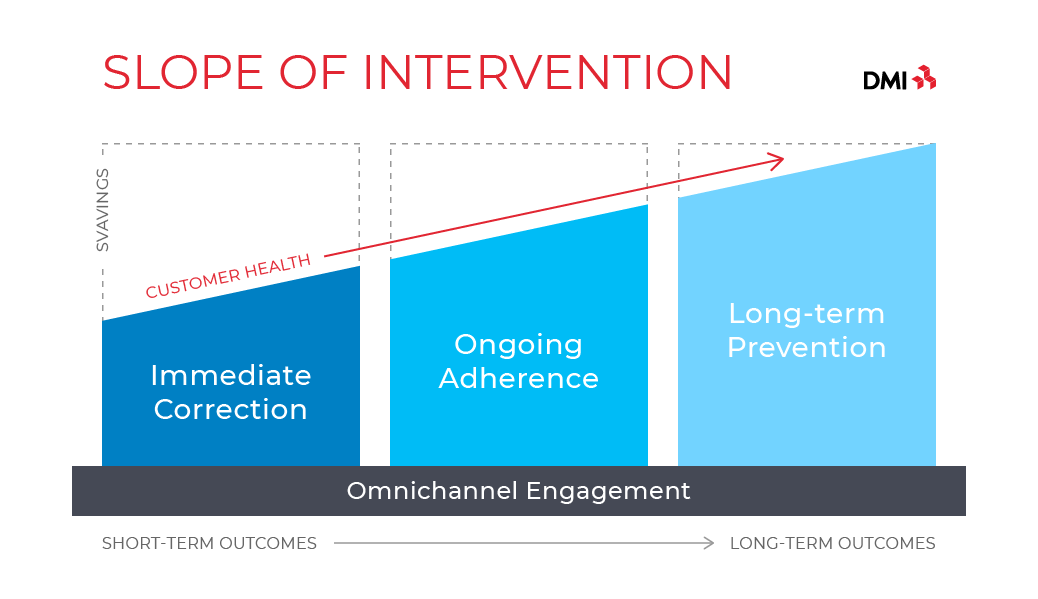As a health insurer advances its care quality and engagement strategy beyond correcting immediate health conditions toward long-term preventative care, two things will happen:
- The organization’s member population can see an overall improvement in health.
- The payer can benefit from maximum cost savings.

The strategic approach to engagement that we discussed in Part 1 and Part 2 of this blog series champions member-centricity and should be designed to support the patient in their current health status.
We developed our Slope of Intervention model to assist organizations with this tailoring of care gap interventions — progressing patients from immediate correction upwards into ongoing adherence, and, finally, towards long-term prevention. It is in the last stage that we realize the best outcomes and maximum benefits—clinically for patients and financially for payers.
Where are Your Members on the Slope of Intervention?
Impactful campaigns engage patients where they are on the Slope.
For example, it would be ineffective to share tips for prevention if the member already has a poorly managed condition. Imagine a patient who is taking prescription medication incorrectly in an attempt to control a flared chronic condition. If the healthcare provider or insurance payer sends unsolicited tips on how to prevent the condition, such messaging would be ill-timed, appear uninformed, and provide little-to-no value to the patient.
A better message might be aspirational and empathetic — one that acknowledges the patient’s condition, looks ahead to the next stages of their recovery journey, and provides resources to help the patient climb the Slope to better health.
Long-Term Prevention
Closing gaps through immediate correction offers insurance payers the best opportunity for short-term savings. Care gaps often result in an acute condition that may require expensive hospitalization or can develop into costly chronic conditions when warning signs are missed.
In order for payers to increase their return and reach the full savings potential, they must guide their member population up the Slope of Intervention to long-term prevention. Through promotion of wellness and adherence to medical best practices, insurers can avoid the higher costs of reactive care. Prevention also offers optimal health outcomes for patients.
Where Can Your Organization Improve?
Your organization may find itself with cohorts of patients needing corrective care. Focusing your short-term strategy on these specific populations makes absolute sense.
Other organizations may have already established a reliable methodology for patients needing corrective care. But perhaps these organizations have struggled to develop and nurture a long-term preventative care engagement strategy.
Regardless of your organization’s current quality efforts, determining where segments of your population fall on the Slope of Intervention is a valuable exercise toward more strategic and member-centered engagement.
In addition to cost savings and healthier members, payers that move their populations up the Slope of Intervention can also expect to reap other benefits, such as higher quality scores.
Is your organization in need of a strategic partner to expedite closing care gaps in your population? Connect with our team: We know how to build meaningful engagement with your customers and can help you optimize your return on investment.


